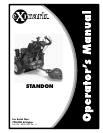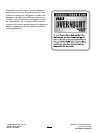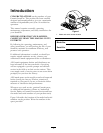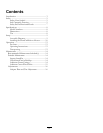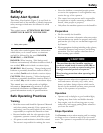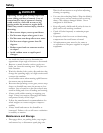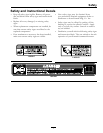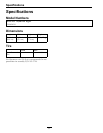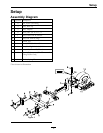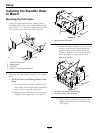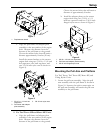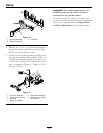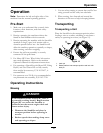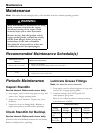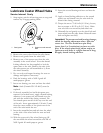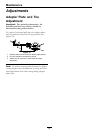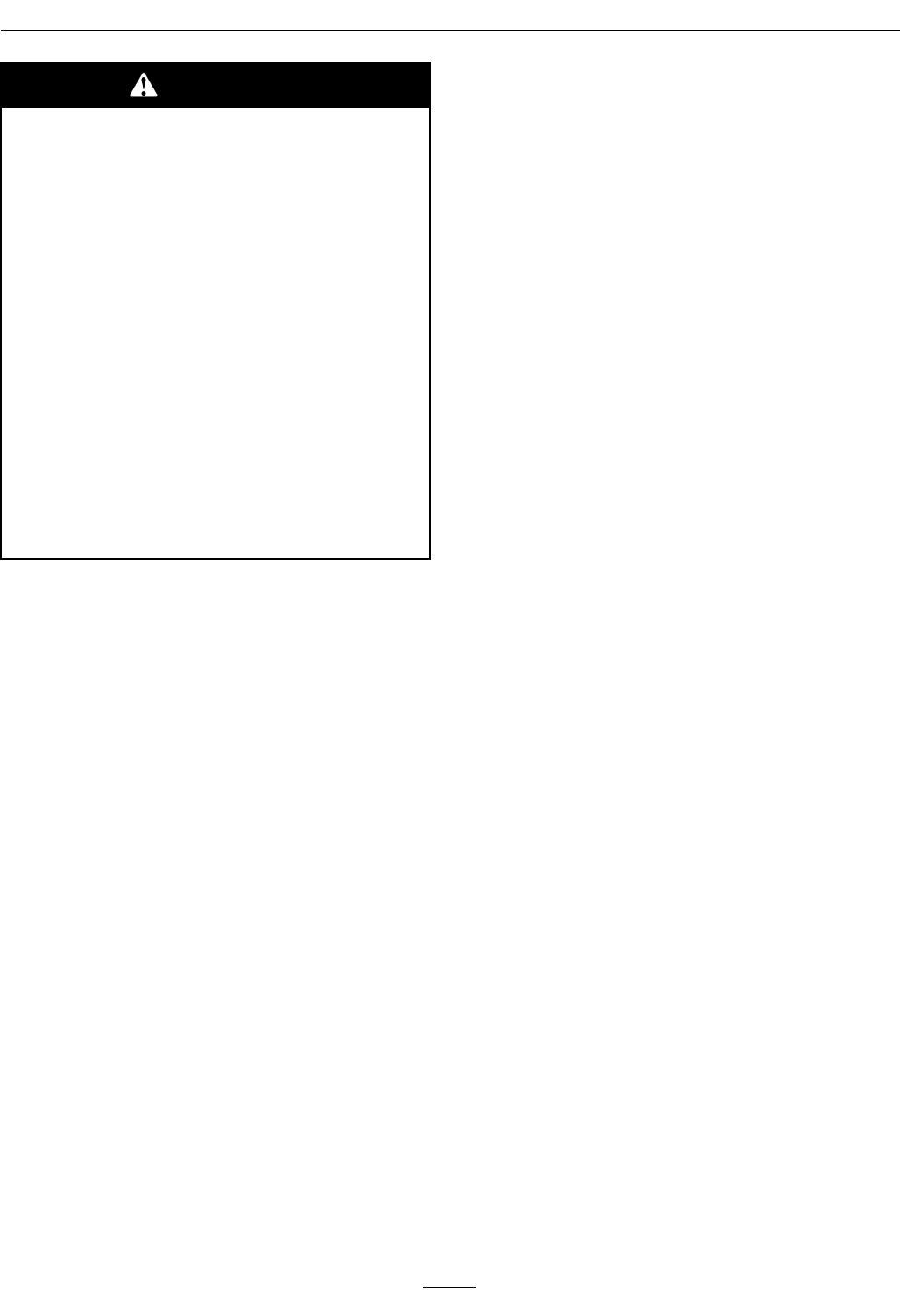
Safety
DANGER
Operating on wet grass or steep slopes can
cause sliding and loss of control. Loss of
control and/or loss of operator’s footing
could result in a fall with an arm or leg
getting under the mower or engine deck
which may result in serious injury, death or
drowning.
• Mow across slopes, never up and down.
• Do Not mow slopes when grass is wet.
• Do Not mow near drop-offs or near water.
• Do Not mow slopes greater than 20
degrees.
• Reduce speed and use extreme caution
on slopes.
• Avoid sudden turns or rapid speed
changes.
• See inside the back cover to determine the
approximate slope angle of the area to be mowed.
• Remove or mark obstacles such as rocks, tree
limbs, etc. from the mowing area. Tall grass can
hide obstacles.
• Watch for ditches, holes, rocks, dips and rises that
change the operating angle, as rough terrain could
overturn the machine.
• Avoid sudden starts when mowing uphill because
the mower may tip backwards.
• Be aware that operating on wet grass, across steep
slopes or downhill may cause the mower to lose
traction. Loss of traction to the drive wheels may
result in sliding and a loss of braking and steering.
• Always avoid sudden starting or stopping on a
slope. If tires lose traction, disengage the blades
and proceed slowly off the slope.
• Follow the manufacturer’s recommendations for
wheel weights or counter weights to improve
stability.
• Always install and remove the StandOn as
instructed. Failure to do so will cause a reduction
in stability or traction.
Maintenance and Storage
• Disengage drives, set parking brake, stop engine
and remove key or disconnect spark plug wire.
Wait for all movement to stop before adjusting,
cleaning or repairing.
• Use care when checking blades. Wrap the blade(s)
or wear gloves, and use caution when servicing
them. Only replace damaged blades. Never
straighten or weld them.
• Keep all guards, shields and all safety devices in
place and in safe working condition.
• Check all bolts frequently to maintain proper
tightness.
• Frequently check for worn or deteriorating
components that could create a hazard.
• All replacement parts must be the same as
or equivalent to the parts supplied as original
equipment.
6



